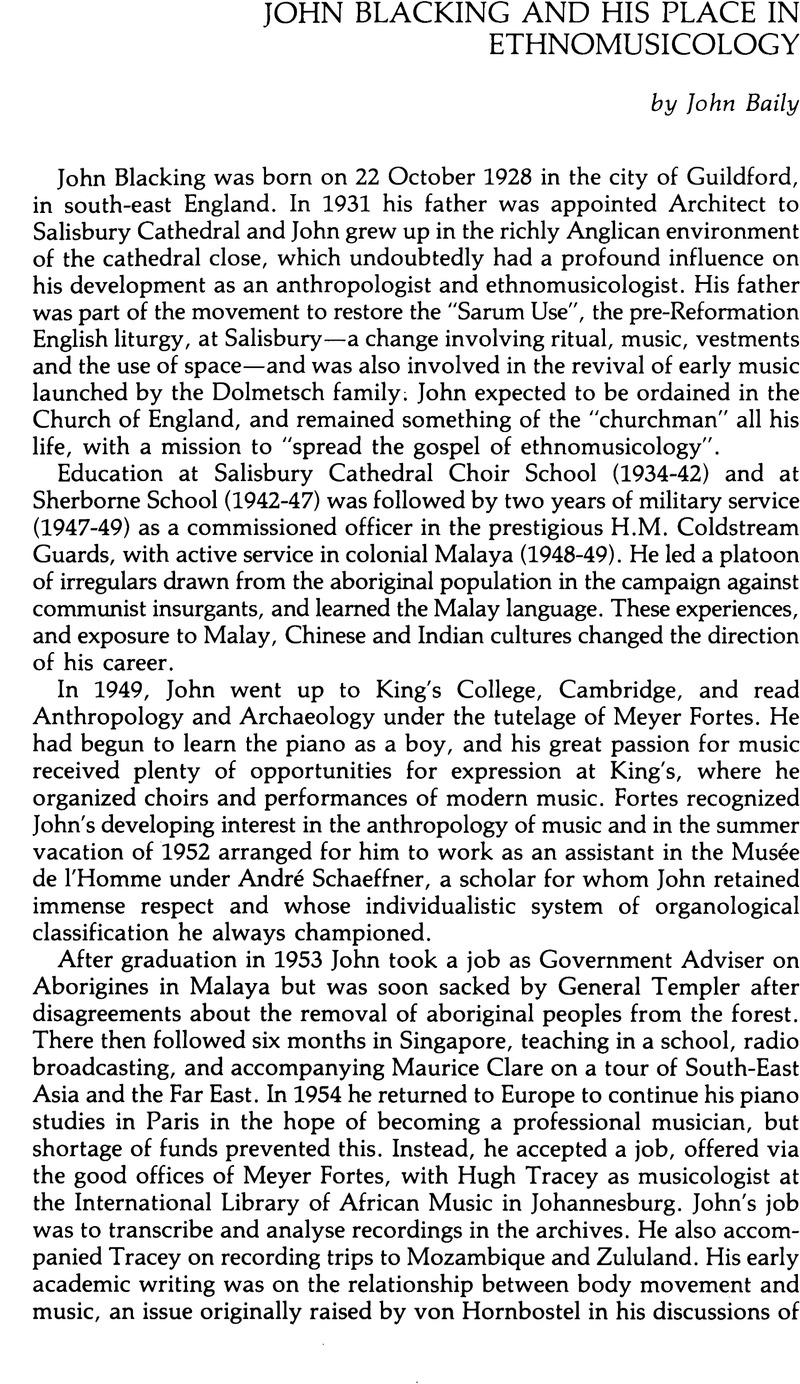Crossref Citations
This article has been cited by the following publications. This list is generated based on data provided by Crossref.
Agawu, Kofi
1997.
John Blacking and the study of African music.
Africa,
Vol. 67,
Issue. 3,
p.
491.
Anareily, Suzel
1998.
The ethnographic enterprise: Venda girls’ initiation schools revisited.
British Journal of Ethnomusicology,
Vol. 7,
Issue. 1,
p.
45.





